|
2022년 12월 부로 Porometer사 장비 모델명이 아래와 같이 변경되었으니 참고 부탁드립니다.
변경 전 변경 후
POROLUX™ 50 POROLUX™ BP
POROLUX™ 100 POROLUX™ Cito L
POROLUX™ 200 POROLUX™ Cito M
POROLUX™ 500 POROLUX™ Cito
POROLUX™ 1000 POROLUX™ Revo
POROLIQ™ 1000 AQ POROLIQ™ AQ
POROLIQ™ 1000 ML POROLIQ™ ML
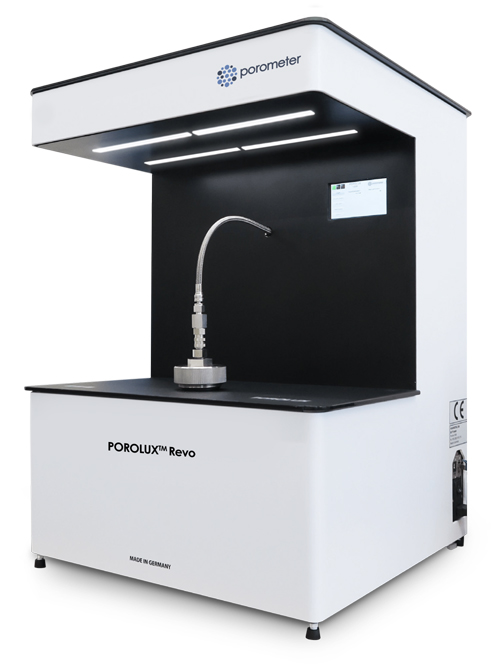
POROLUX™ Revo
- POROLUX™ 1000 후속 모델
- 최소 13 nm까지 멤브레인, 중공사막등의 기공크기 측정
- 기공크기 측정범위: 13 nm to 500 nm
- 35 bar까지 가압
- 특허 출원중인 MP2 (Multistage Pressure Process) 기술로 정밀한 압력 컨트롤
- 3가지 bubble point 측정 방식
- 직관적이고 사용하기 쉬운 소프트웨어
POROLUX™ Revo X
- 최소 80 nm까지 멤브레인, 중공사막등의 기공크기 측정
- 기공크기 측정범위: 80 nm to 500 nm
- 8 bar까지 가압
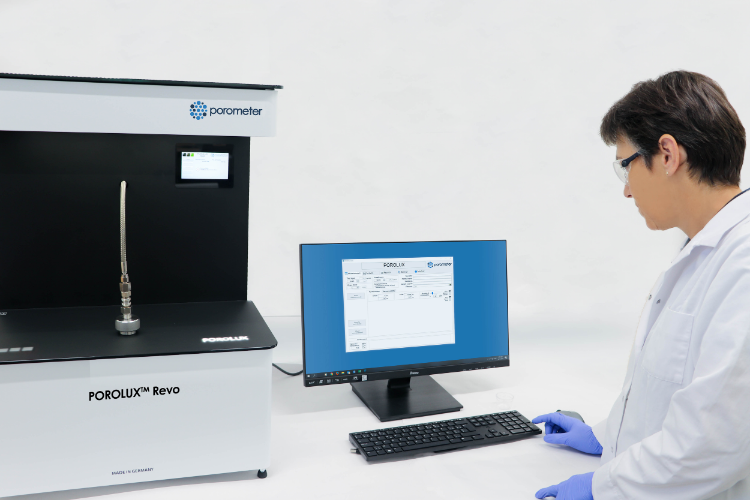
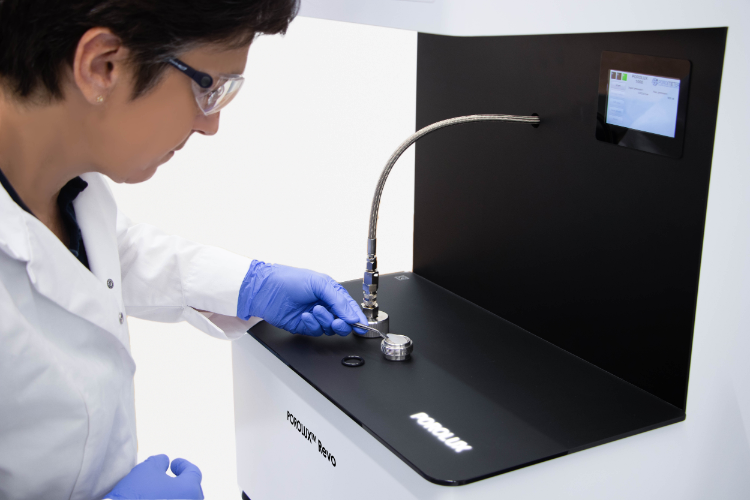
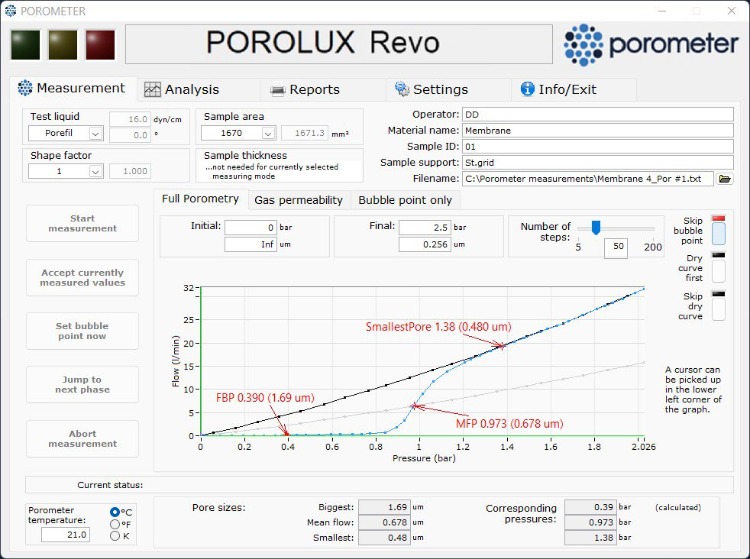
Specifications
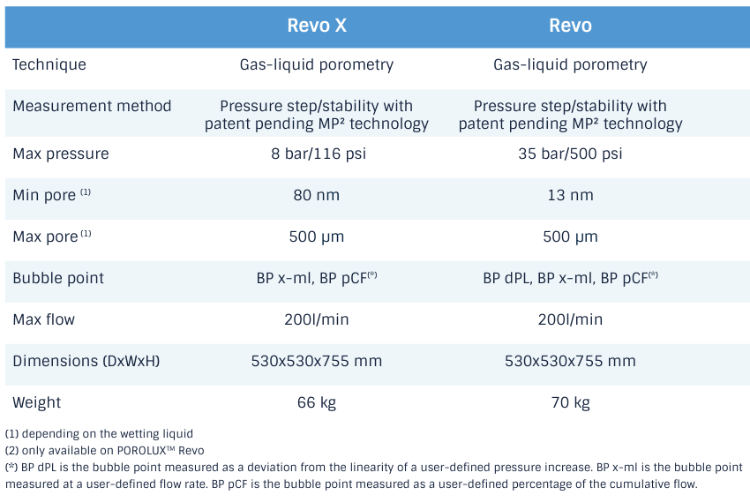
Data
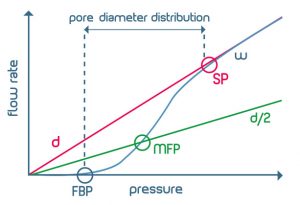
Measuring curves and resulting parameters in CFP
(w = wet curve, d = dry curve, d/2 = half-dry curve, FBP = largest pore, MFP = mean flow pore, SP = smallest pore)
In a typical CFP test a flow of pressurized gas is applied to the porous sample impregnated with the wetting liquid and the flow of gas through the sample, as the liquid is displaced out of the porous network, is measured. The “wet curve” represents the measured gas flow against the applied pressure.
Following the wet curve, the gas flow against the applied pressure on the dry sample (“dry curve”) is also measured. From data from the wet curve, the dry curve and the “half-dry curve” (dividing the flow values of the dry curve by 2) information about the porous network can be obtained.
•Bubble point
Maximum pore diameter
•Smallest pore size
Calculated at the pressure at which the dry curve meets the wet curve
•Mean flow pore diameter
Pore size at which 50 % of the total gas flow can be accounted (half the flow is through pores larger than this diameter)
•Gas permeability
In the same measurement it is possible to obtain the gas flow rate. If the material area and thickness are known, the gas permeability can also be accounted.
•Cumulative filter flow [SUM]
It shows which percentage of the flow (at the Y-axis) has passed through pores with a size larger than the value at the corresponding point at the X-axis. It is also known as filter efficiency.
•Differential filter flow [DIF]
It shows the percentage of flow (at the Y-axis), which has passed the pores with a corresponding size at the X-axis and the following size value at the same axis. According to ASTM this graph shows the so called “pore size frequency”.
•Pore size flow distribution [CDIF]
It shows the flow distribution normalized per unit of change in size (flow changes are divided by size changes). Sometimes it is also referred to as pore size distribution.
|













